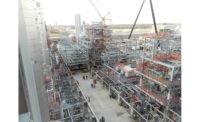Best Projects
Best Project, Specialty Construction: Vulcan Centaur Infrastructure Activations

Photo courtesy Matt Good
Vulcan Centaur Infrastructure Activations
Cape Canaveral Space Force Station, Fla.
Best Project, Specialty Construction
Submitted By: Hensel Phelps
Owner: United Launch Alliance
Lead Design Firm: United Launch Alliance
General Contractor: Hensel Phelps
Civil Engineer: Nelson Engineering Co.
Structural Engineer: IMEG
MEP Engineer: Nelson Engineering Co.
Many construction projects have challenging site conditions and stringent specifications to meet, but few require actual rocket science. The Vulcan Centaur Infrastructure Activations project had to renovate an active rocket launch pad between 16 launches that cost an average $225 million each, requiring intensive coordination and collaboration.
Judges remarked on the project’s successful navigation of the 16 rocket launches and the sheer magnitude of the project—featuring a $190-million construction cost—which logged more than 810,000 total worker hours with no lost-time accidents and an OSHA recordable incident rate of 1.11.
Each component, including the 183-ft-tall Vulcan Launch Planform, 160-ft tower and access platforms, three 100,000-gallon liquid natural gas tanks and 122,000-gallon Centaur liquid hydrogen tank and more required miles of control cabling and the reconfiguration of thousands of termination points.
The most difficult challenge, according to the project team, was scheduling work between those launches, requiring coordination of construction sequencing relative to the launch schedule and ULA operations with a master schedule that included a 90-day look-ahead, a four-week schedule and work-window schedules.
The project created the first-ever dual launch pad in the world, providing a vehicle pad system, for which Hensel Phelps relied on offsite prefabrication and virtual design and construction coordination.
Assembling offsite allowed work to happen in a controlled environment before the pieces were brought to the site for final assembly, which required the closure of multiple roads, a police escort and a very large vehicle for transportation. That entire process required close coordination with the city, local police and Cape Canaveral Space Force Station, all achieved with no complications.
Laser scanning, another innovative technique judges remarked on, was used by the Hensel Phelps team as a quality verification tool throughout the project. Laser scan data was used to validate system connection points and was a key tool in optimizing work by generating 3D models, proving to be an efficient and safe way to verify the installation tolerances ahead of time.
Rocket launch pads require a high level of quality and assurance to operations, with each component receiving an improvement of quality and design function, like the 65,000-gallon liquid oxygen tank, modification to the Vehicle Integration Facility platforms and Spaceflight Processing Operations Center with its 160-ft tower and access platforms.
Hensel Phelps also partnered with Performance Engineering Group as an independent quality control team, which rejected any work in non-conforming work which was repaired or removed and replaced as needed.
The result is a launch vehicle pad system that will help Americans travel to space.



